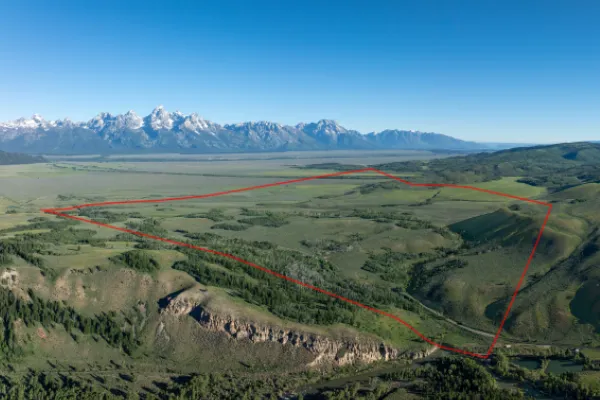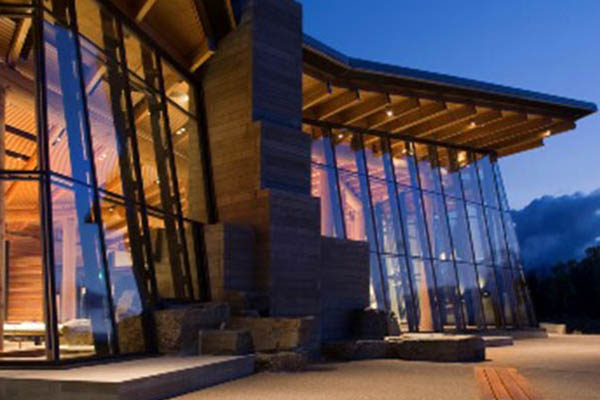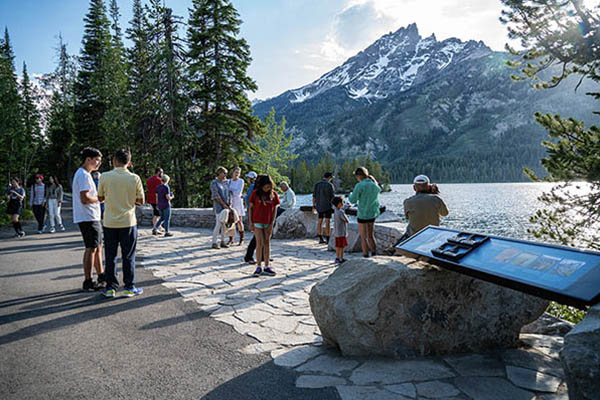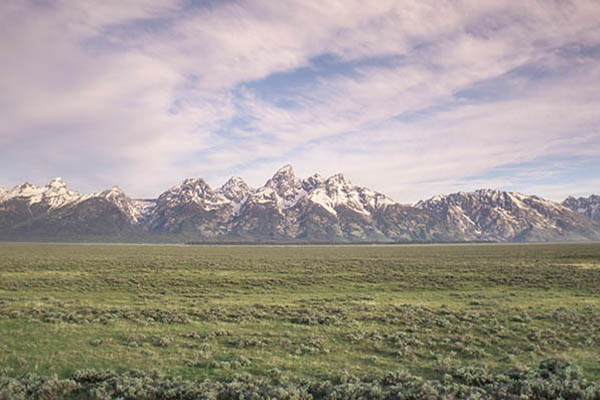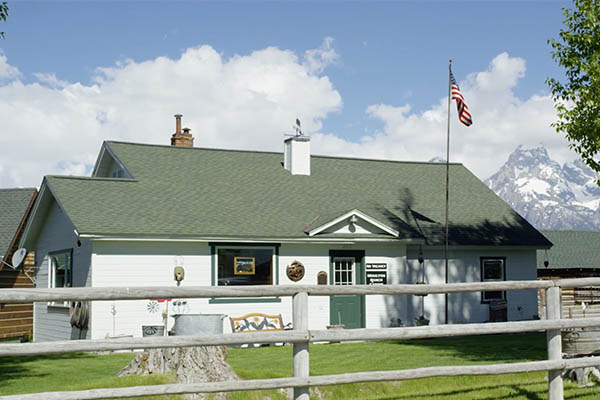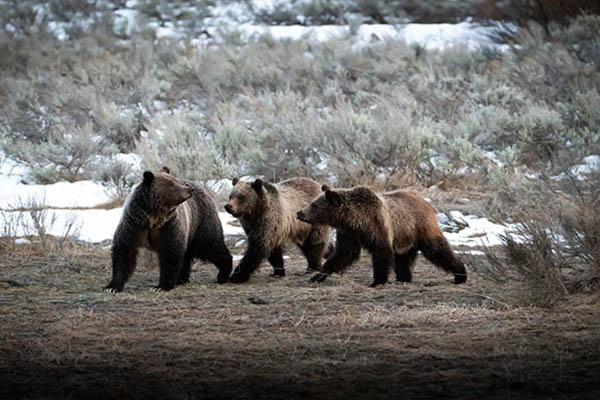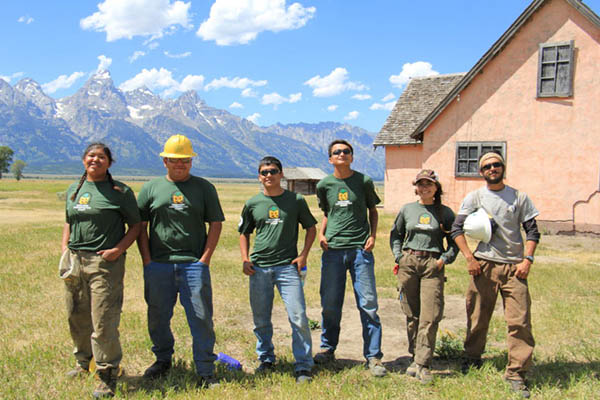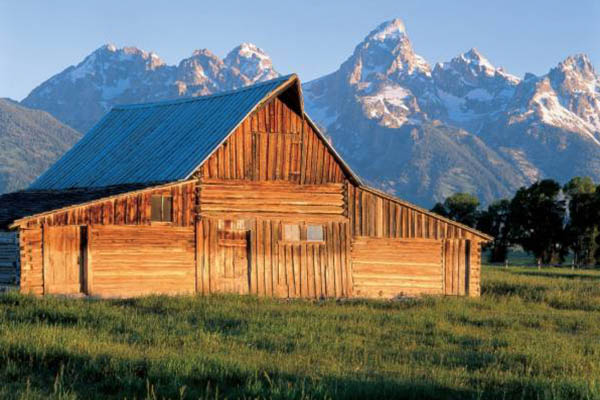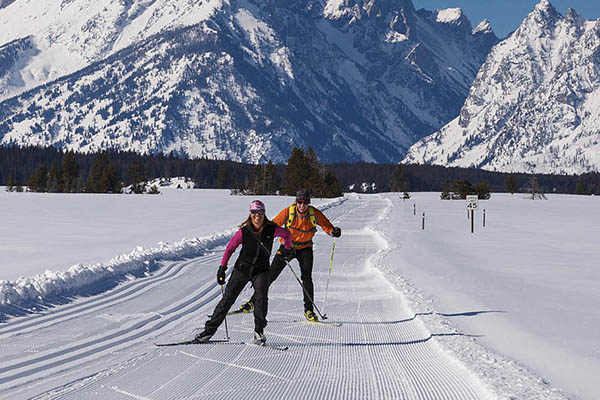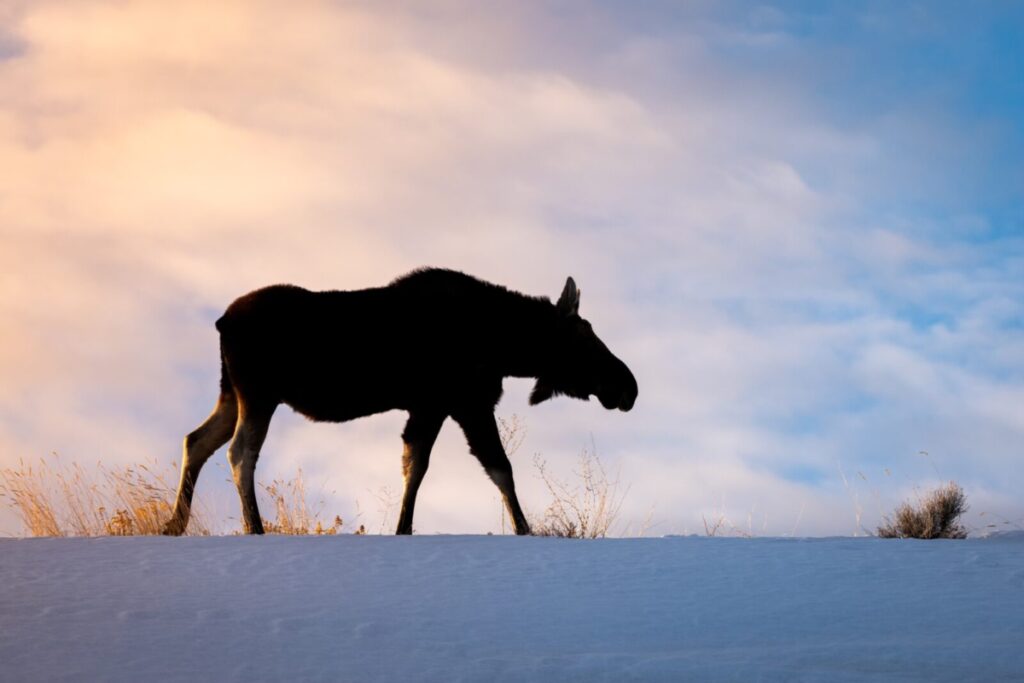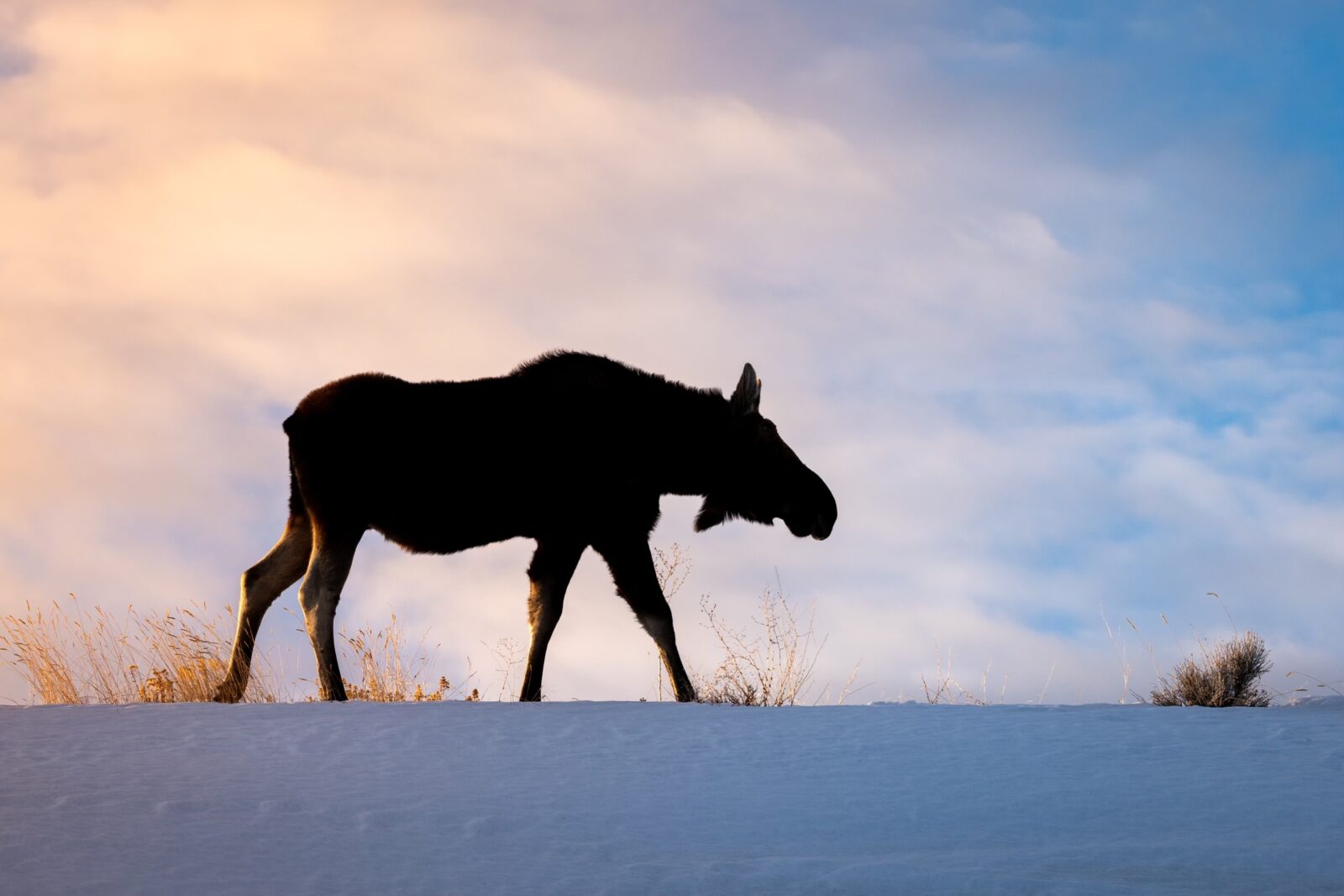
As of Monday, February 27, the Snake River Headwaters is recording snow water equivalents at 105% of median, compared to 82% in 2022 and 100% in 2021 for the same day. As we enter late winter/early spring, please keep in mind that this is the toughest time of year for many species as their fat reserves are the lowest while they wait for spring green up. Maintaining respectful distances and not allowing your actions to influence wildlife behavior are paramount.
- By late February, bull moose have dropped their antlers. To tell the difference between males and females, look for the antler attachment points, called pedicles, on the heads of males or the white fringed area around the tail of females.
- Wolves have finished breeding, and like domestic dogs, their gestation period is 63 days. Females will whelp pups in mid-to-late April, but the pups will not emerge from dens until May.
- Long-tailed weasels are crust cruising and leaving behind tell-tale signs of their activities—dumbbell shaped tracks zig-zagging across the snow’s surface and small hoes that plunge to the subnivean (below snow) environment where they find prey.
- The small, isolated population of greater sage-grouse that occupies the valley year-round survives the winter by foraging on sagebrush leaves exposed above the snow.
- Park staff conducted their annual winter sage-grouse count in mid-February with assistance from the Teton Raptor Center and other volunteers. The winter count was 186 birds, 50% higher than in 2022, suggesting the population may be rebounding from its historic low. Biologists complete annual surveys in mid-February when the snowpack is typically at its deepest and sage-grouse are concentrated in areas where mature sagebrush is exposed. The winter count provides a snapshot of sage-grouse numbers prior to their courtship at lek sites, which will begin in late March and early April when biologists will again count birds.
- Mule deer that summer within Grand Teton are on their winter ranges in the north and south forks of the Shoshone River near Cody; around Dubois and Crowheart, Wyoming; in Idaho’s Teton Canyon and Sand Creek Desert; and near Pinedale, Farson, and Rock Springs, Wyoming, to the south. Some animals, like mule deer, migrate long distances to avoid the harsh winter conditions encountered in Jackson Hole and to find more accessible foods where snow cover is reduced.
- During mid-winter, vegetation can be exposed on southern aspects where trees radiate warmth, causing the snow around the base of the tree to melt. Resident mule deer will move from tree well to tree well to take advantage of the available browse.
- Pronghorn are poorly adapted to deep snow and the typical extreme winter conditions of Jackson Hole. Most of the 300 or so animals that summer here migrate to the Green River drainage south and east of Jackson Hole to winter, where snow is not as deep.
- As days gradually lengthen, ravens, bald eagles, and great-horned owls—some of the area’s earliest nesters—have begun courtship activities.
- River otters are active near water bodies all winter, using holes in the ice to move between land and water. Otters are well adapted to a life in and out of cold water with thick, protective fur that helps them keep warm. Because of their short legs, webbed feet, and sleek bodies they are strong swimmers.
Remember to please consider the space and energy conservation needs of wildlife during winter and do not approach them closely, even though they may appear unconcerned. In many cases, they simply have nowhere else to go until snow depths decrease.

